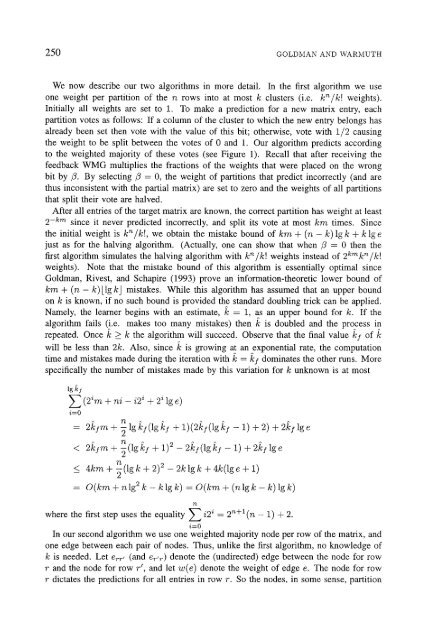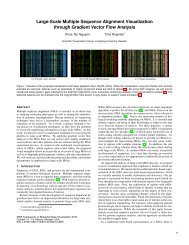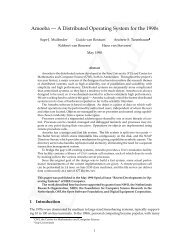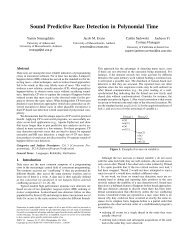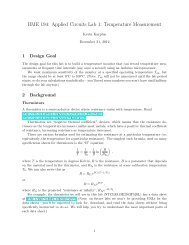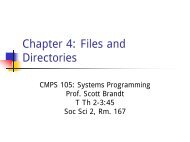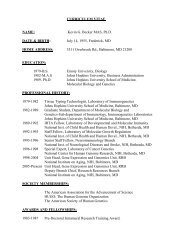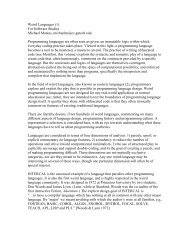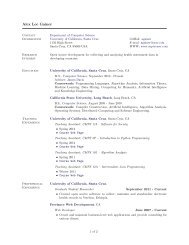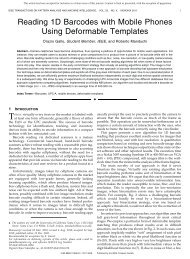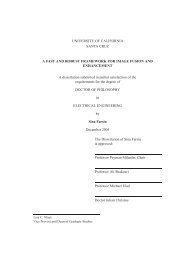Learning binary relations using weighted majority voting
Learning binary relations using weighted majority voting
Learning binary relations using weighted majority voting
Create successful ePaper yourself
Turn your PDF publications into a flip-book with our unique Google optimized e-Paper software.
250 GOLDMAN AND WARMUTH<br />
We now describe our two algorithms in more detail. In the first algorithm we use<br />
one weight per partition of the n rows into at most k clusters (i.e. kn/k! weights).<br />
Initially all weights are set to 1. To make a prediction for a new matrix entry, each<br />
partition votes as follows: If a column of the cluster to which the new entry belongs has<br />
already been set then vote with the value of this bit; otherwise, vote with 1/2 ca<strong>using</strong><br />
the weight to be split between the votes of 0 and 1. Our algorithm predicts according<br />
to the <strong>weighted</strong> <strong>majority</strong> of these rotes (see Figure 1). Recall that after receiving the<br />
feedback WMG multiplies the fractions of the weights that were placed on the wrong<br />
bit by/3. By selecting /3 = 0, the weight of partitions that predict incorrectly (and are<br />
thus inconsistent with the partial matrix) are set to zero and the weights of all partitions<br />
that split their vote are halved.<br />
After all entries of the target matrix are known, the correct partition has weight at least<br />
2 -km since it never predicted incorrectly, and split its vote at most km times. Since<br />
the initial weight is kn/k!, we obtain the mistake bound of km + (n - k) lg k + k lg e<br />
just as for the halving algorithm. (Actually, orte can show that when /3 = 0 then the<br />
first algorithm simulates the halving algorithm with k~/k! weights instead of 2kmk~/k!<br />
weights). Note that the mistake bound of this algorithm is essentially optimal since<br />
Goldman, Rivest, and Schapire (1993) prove an information-theoretic lower bound of<br />
km + (1% - k)[lg kJ mistakes. While this algorithm has assumed that an upper bound<br />
on h is known, if no such bound is provided the standard doubling trick can be applied.<br />
Namely, the learner begins with an estimate, /~ = 1, as an upper bound for k. If the<br />
algorithm fails (i.e. makes too many mistakes) then /~ is doubled and the process in<br />
repeated. Once k _> k the algorithm will succeed. Observe that the final value k I of<br />
will be less than 2k. Also, since k is growing ~ an exponential rate, the computation<br />
time and mistakes made during the iteration with k = kf dominates the other runs. More<br />
specifically the number of mistakes made by this variation for k unknown is at most<br />
lg kf<br />
Z (2im + ni - i2 i + 2 i lg e)<br />
/=0<br />
1%<br />
= 2kfm + -~ lg/eX (lg ky + 1)(2/of(lg/of - 1) + 2) + 2kl lg e<br />
< 2/¢fra + 2(lg/of + 1) 2 - 2/¢f(lgkf - 1) + 2kflge<br />
1%<br />


